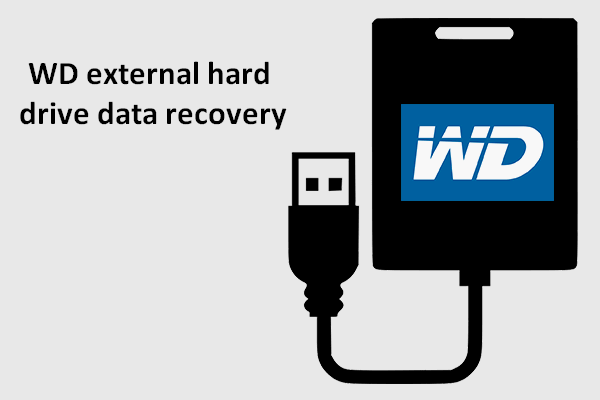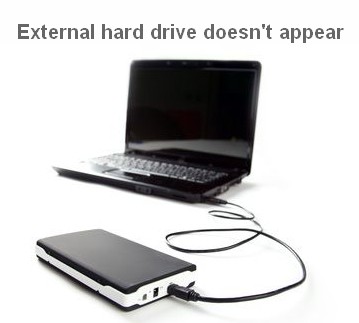

- #You salvage data off an external hard drive for mac how to
- #You salvage data off an external hard drive for mac for mac
- #You salvage data off an external hard drive for mac install
- #You salvage data off an external hard drive for mac mac
But you may as well try to boot from an external drive running OS X. If your machine is running Lion or newer, and the Recovery HD isn't showing, then it does suggest the drive problems are terminal. If you have an older Mac, you will need to boot from an external drive either optical or HDD, that has OS X on it. Lion has been around since 2011, so anything newer than that should have the Recovery HD partition available if the drive is showing any signs of life.
#You salvage data off an external hard drive for mac mac
If you are using an old Mac running an OS older than Lion, then there will be no Recovery HD option. What to do if the Recovery HD is missing on Mac
#You salvage data off an external hard drive for mac how to
Read next: How to reinstall Mac OS X using Recovery mode. Once you have an external drive, you can then use that as your boot drive, and recover any lost files to there. So if you manage to resurrect your sickly drive, quit all your software, including email, to avoid overwriting any list files. If you have lost any data, it is very important to avoid using the drive, as anything that writes files to the drive, may be writing over your lost files. You should plan to get an external drive plugged in as soon as you can, so that you can secure your data there. If any of the disk utilities manage to fix your drive enough to let you boot from it again, be very careful how you use it. One thing to bear in mind is that if you do manage to boot from Recovery HD, you'll need another drive to recover files to. The way SSDs work is very different from HDDs that most traditional tools struggle to help at all. However, if you attempt to use these tools on an SSD, you'll most likely find they aren't quite so helpful. They all claim to be more effective than Disk Utility, but how well they do is very dependent on whatever is at the root of the problem. If you have any disk management tools, like TechTool Pro, Disk Warrior or Drive Genius, this is a good time to try them out.

At this point, run the Disk Utility from the Recovery HD and see if that helps. If you have started from Recovery HD, then with luck your Mac will see the offending drive.
#You salvage data off an external hard drive for mac for mac
Read our round up of the best storage devices available now: Best storage options for Mac What to do if your Mac has started from Recovery HD Booting from this partition doesn't do anything to the main drive, so there's no need to worry about overwriting documents. This is actually a partition on the drive that is invisible in most circumstances, and only shows up when you most need it. However, as long as the drive failure isn't too terminal, a restart should reveal Recovery HD.
#You salvage data off an external hard drive for mac install
Read: How to make a bootable OS X Yosemite install drive

Now that modern Macs no longer ship with optical disk drives, you may not have an easy option to boot from another disk. If you tried to restart and the drive didn't survive the experience, you may find yourself in an even stickier situation. However when dealing with dying disks, they may not survive the experience. So it's often the first bit of advice you'll hear. It's become something of a clich, but turning it off and on again, is often a good way to reset any gremlins in your system. (Not) Turning it on and off again to solve a disk problem When you delete data, SSDs actively reset their memory to be blank, while HDDs simply ignore any data in a block and only overwrite it if there is new data to store. But the chances of recovery are far worse. If fixing permissions doesn't help, you can still follow the same process to attempt to save the data. SSDs are fundamentally different from HDDs, and although they seem to act the same, fixing them is a whole different matter. If your drive isn't a disk but an SSD (Solid State Drive) you may find the problem is more serious. It's the first port of call for any, "My Mac is being weird", issues. In fact doing this regularly is advisable, as incorrect disk permissions can cause all sorts of issues. T's also a good idea to fix Disk Permissions too. This is a good first step and if it's an easily fixed problem, then it could resolve it quickly. Click on the disk and then click either Verify Disk, Repair Disk, or First Aid. You'll find this in the Utilities folder, inside your Apps folder or by searching for it in Spotlight Search. If your drive seems to be having problems, but you are still up and running, the first thing to do is launch Disk Utilities. How to back up your Mac: Three types of backup all Mac users should be using Best cloud based, live backup options Best bootable back ups for Mac Best remote backup options How to solve a hard disk or SSD problem on Mac


 0 kommentar(er)
0 kommentar(er)
